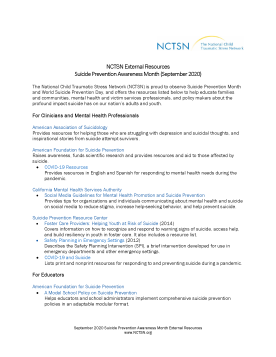
National Suicide Prevention Awareness Month External Resources
Provides external resources related to National Suicide Prevention Awareness Month.
The following resources on child trauma were developed by the NCTSN. To find a specific topic or resource, enter keywords in the search box, or filter by resource type, trauma type, language, or audience.

Provides external resources related to National Suicide Prevention Awareness Month.
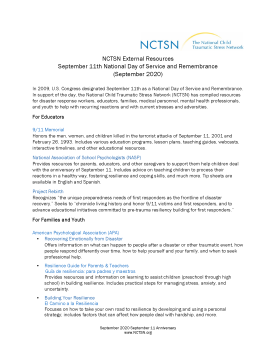
Provides external resources related to September 11th National Day of Service and Remembrance.
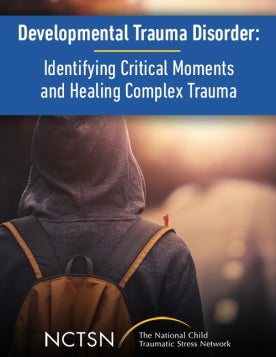
Presents Jordyn, age 16, who lives with her mother, father, and two younger siblings and has been exposed to intimate partner violence and parental substance use, as well as prolonged periods of separation while her father was deployed in Afghanistan.
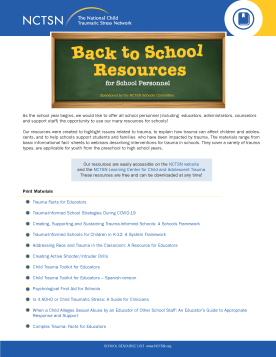
is a list of NCTSN products that are useful for school staff and personnel.
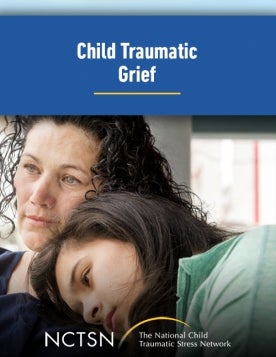
Este Seminario en línea ayuda a proveedores, cuidadores primarios y otros involucrados en el cuidado de los niños inmigrantes, a reconocer los efectos de la separación traumática en estos niños a diferentes edades.
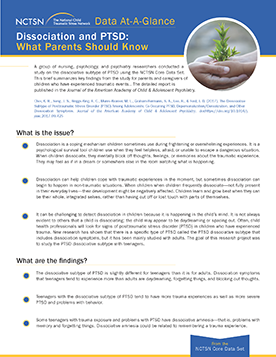
Provides parents with information about dissociation and PTSD.
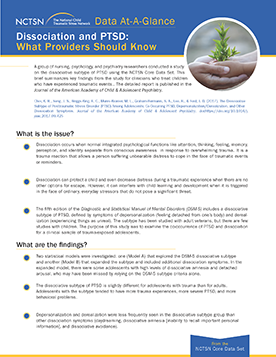
Offers providers information about dissociation and PTSD.
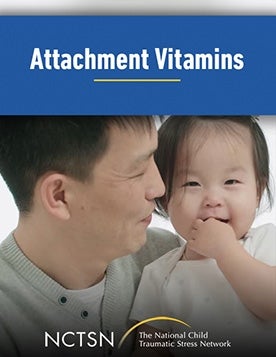
Helps learners support children and families through the early years of a child’s life and development.
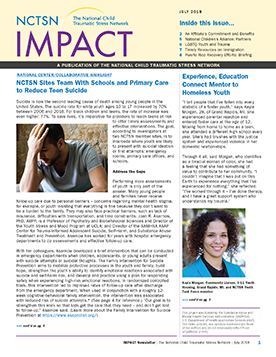
Includes articles that range from a report on teen suicide screening and intervention to new resources for bringing an LGBTQ lens to trauma-informed care.
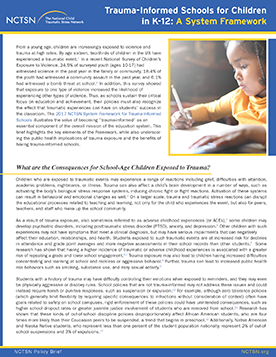
Highlights the key elements of the 2017 NCTSN System Framework for Trauma-Informed Schools, while also underscoring the public health implications of trauma exposure and the benefits of having trauma-informed schools. Updated March 2021.
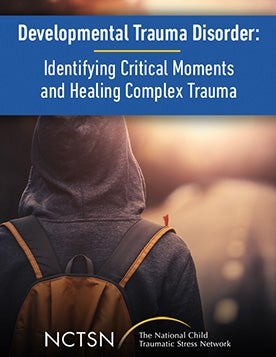
Presents, through dramatized therapy sessions, traumatized youth who are profoundly emotionally shut down or dissociative and how therapists can remain attuned to clients.
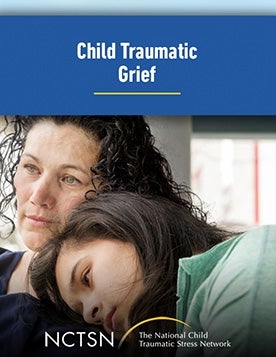
Focuses on helping providers, current caregivers, and others understand and recognize the effects of Traumatic Separation in immigrant children of different ages, understand immigrant children’s prior trauma experiences, and provide practical suggestions for how to support immigrant children who